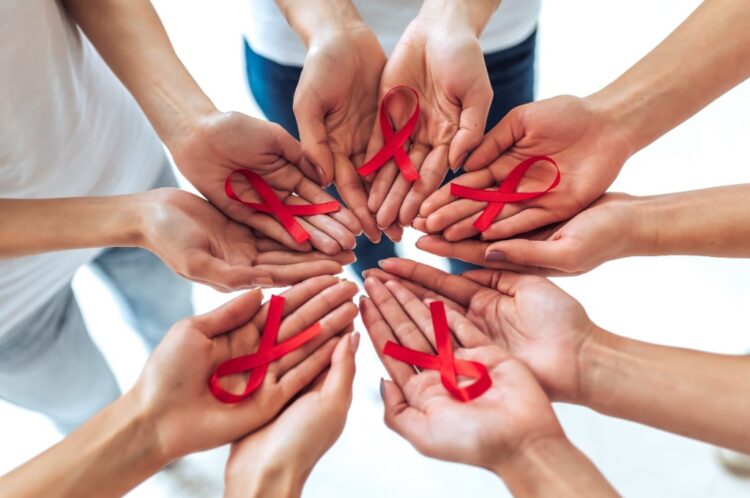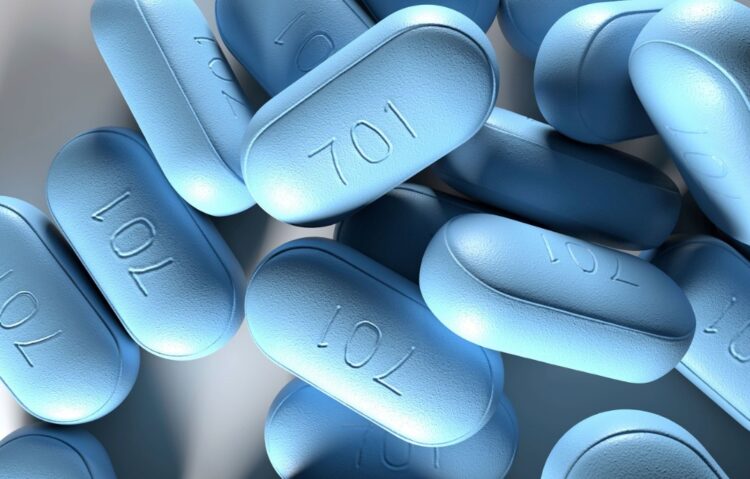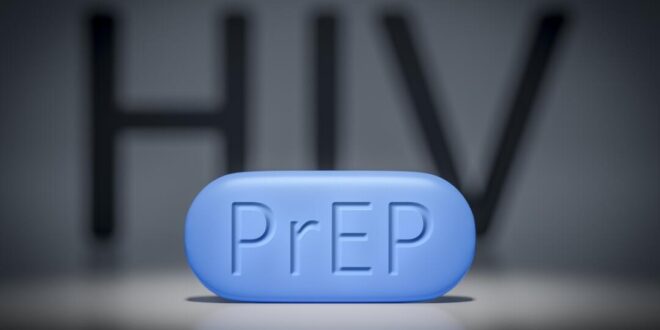Pre-exposure Prophylaxis, commonly known as PrEP, is a groundbreaking approach to HIV prevention that has revolutionized the landscape of public health interventions. It involves using antiretroviral medication by individuals at high risk of contracting HIV to reduce their chances of infection significantly.
Individuals taking a daily dose of PrEP can effectively lower the risk of acquiring the virus if exposed. This preventive measure has been hailed as a game-changer in HIV prevention, providing additional protection to those who may engage in high-risk behaviors, such as unprotected sex with HIV-positive partners or intravenous drug use.
PrEP medications, such as Truvada and Descovy, work by blocking the replication of the virus in the body, preventing it from establishing a foothold and causing a systemic infection. When taken consistently and as prescribed, it is highly effective in preventing new HIV infections.
Clinical trials and real-world studies have demonstrated that PrEP can reduce the risk of acquiring HIV by up to 99% in individuals who adhere to the medication regimen. This remarkable efficacy has transformed the landscape of HIV prevention, offering hope for a future where new HIV infections can be significantly reduced.
The Benefits of PrEP ─ How it has Revolutionized HIV Prevention

PrEP’s introduction into HIV prevention has been a watershed moment. It provides a proactive and empowering approach to protecting oneself from infection. One of the most significant advantages of PrEP is that it allows individuals to take control of their sexual health and make informed decisions about their risk.
It provides an option for those who may face barriers in negotiating condom use with their partners or those in serodiscordant relationships (where one partner is HIV-positive and the other is HIV-negative).
Moreover, the medication has been instrumental in reaching vulnerable populations with limited access to traditional HIV prevention methods. It has been particularly beneficial for men who have sex with men (MSM), transgender individuals, sex workers, and intravenous drug users, as these groups often face heightened risk factors for HIV transmission. By expanding access to PrEP, public health initiatives can effectively target these populations and work towards reducing HIV incidence in communities with a high burden of infection.
In addition to its effectiveness in preventing HIV transmission, PrEP addresses the stigma associated with HIV prevention. It offers an alternative and complementary method to condom use, providing individuals with an added layer of protection and reducing anxiety related to potential exposure to the virus.
This aspect of PrEP has helped reduce the stigma surrounding HIV prevention and empowers individuals to make decisions that align with their sexual health needs and preferences.
In conclusion, PrEP has transformed HIV prevention by offering a powerful and effective tool to protect high-risk individuals from acquiring HIV. Its efficacy, accessibility, and potential to improve lives make it a critical component of comprehensive HIV prevention strategies.
By understanding the potential adverse side effects and weighing them against the substantial benefits of protection against HIV, individuals can make informed decisions about incorporating it into their sexual health practices, contributing to a safer and healthier future for themselves and their communities.
Potential Negative Side Effects of PrEP ─ What You Need to Know

While Pre-exposure Prophylaxis (PrEP) has shown remarkable effectiveness in preventing HIV transmission, like any medication, it may come with potential side effects.
It is crucial for individuals considering or using it to be aware of these possible adverse effects and discuss them with their healthcare providers to make informed decisions about their sexual health.
Gastrointestinal Issues
Some individuals may experience gastrointestinal discomfort while taking PrEP. Common side effects include mild diarrhea, nausea, and stomach pain. These symptoms are usually mild and temporary, often improving over time as the body adjusts to the medication. It is essential to stay hydrated and maintain a balanced diet while on PrEP to minimize these effects.
Kidney Function Changes and Impact on Bone Density
Long-term PrEP use may lead to changes in kidney function, although serious kidney problems are rare. Regular monitoring of kidney function is recommended for individuals on PrEP.
Additionally, concerns about the potential effects on bone density with long-term use have been raised. However, the impact appears modest, and bone density typically returns to normal after discontinuing PrEP.
Rare but Serious Side Effects
While rare, severe side effects have been associated with PrEP. Some individuals may experience liver problems or lactic acidosis, a painful condition where lactate levels rise to dangerous levels in the blood. These side effects are uncommon, but it is essential to be aware of them and seek immediate medical attention if any symptoms occur.
Drug Interactions
PrEP can interact with other medications or substances an individual may be taking, potentially affecting the efficacy of the PrEP or the other drugs. Healthcare providers must be aware of all medications a person takes to ensure no adverse interactions.
Mental Health Considerations
Some individuals may experience mood changes while on PrEP. These changes are generally mild, but it is essential to communicate any mental health concerns with a healthcare provider.
The Importance of Regular Monitoring and Follow-Up Appointments

To mitigate the potential side effects and ensure optimal health while on PrEP, it is essential to maintain regular monitoring and follow-up appointments with healthcare providers. These appointments allow for ongoing assessment of kidney function, bone density, and overall health. Healthcare providers can also address any concerns or questions individuals may have about their experience with PrEP.
Taking PrEP is a personal decision that should be based on an individual’s risk assessment and their healthcare provider’s guidance. While PrEP’s potential side effects are generally mild and well-tolerated, it is essential to weigh these against the substantial benefits of protection against HIV.
Open communication with healthcare providers and regular monitoring are crucial components of a comprehensive approach to sexual health and HIV prevention.
Weighing the Risks vs. Benefits ─ Making an Informed Decision about PrEP Use
When considering PrEP as a preventive measure, evaluating the potential risks versus the benefits is essential. For some individuals, the benefits of PrEP in protecting against HIV transmission may far outweigh the possible side effects or risks associated with the medication. It is crucial to consider individual health factors, lifestyle, and sexual practices when making this decision.
Risks vs. Benefits of Taking PrEP Medication for HIV Prevention
Understanding the risks and benefits of PrEP is essential for making an informed decision. The substantial reduction in the risk of acquiring HIV with usage can be a compelling reason for many individuals at high risk of HIV transmission to consider this preventive measure.
Practical Considerations for Individuals Considering or Currently Using PrEP
Besides the medical aspects, practical considerations should also be considered. Medication adherence, accessibility, and financial concerns can affect an individual’s decision to start or continue PrEP.
Understanding Individual Health Factors that May Impact the Risk-Benefit Analysis
Individual health factors, such as pre-existing medical conditions and family medical history, can influence the risk-benefit analysis of PrEP use. Discussing these factors with healthcare providers to make a personalized decision is crucial.

Conclusion
Pre-exposure Prophylaxis (PrEP) is a real game-changer in HIV prevention, offering a powerful tool to combat new HIV infections. Through its effectiveness in significantly reducing the risk of acquiring HIV, PrEP has provided a new sense of hope and security to individuals at high risk of transmission. However, like any medication, it is crucial to consider the potential side effects and make informed decisions about its use.
The benefits of PrEP in preventing HIV transmission are undeniable. It has transformed the landscape of HIV prevention, providing individuals with a proactive and empowering approach to protect their sexual health. By taking it consistently and following prescribed guidelines, individuals can enhance its efficacy and embrace a sense of control over their well-being.
However, it is equally essential to be aware of potential side effects and exercise caution. While most side effects are mild and transient, some may experience more severe reactions. Individuals can promptly address potential issues by understanding the possible risks and seeking medical attention for any concerning symptoms.
Open and transparent communication with healthcare providers throughout the decision-making process is crucial. Healthcare providers can help assess an individual’s risk factors, address concerns about side effects, and provide guidance on the most suitable HIV prevention strategy based on their unique circumstances.
Furthermore, incorporating additional safe sex practices, such as consistent condom usage and regular HIV and STI testing, further enhances the effectiveness of HIV prevention strategies. Taking a holistic approach to sexual health and HIV prevention can reinforce the protective benefits of PrEP.
Ultimately, PrEP is not a one-size-fits-all solution, and its use should be tailored to individual needs and preferences. With healthcare professionals’ guidance and open dialogue, individuals can make informed decisions about incorporating PrEP into their HIV prevention regimen.
As we continue to advance in HIV prevention, the collective efforts of individuals, communities, and healthcare providers remain critical. By embracing the drug as a vital tool in the fight against HIV and maintaining vigilance in sexual health practices, we can pave the way to a safer and healthier future for all, free from the fear of HIV transmission.
 Hi Boox Popular Magazine 2024
Hi Boox Popular Magazine 2024



